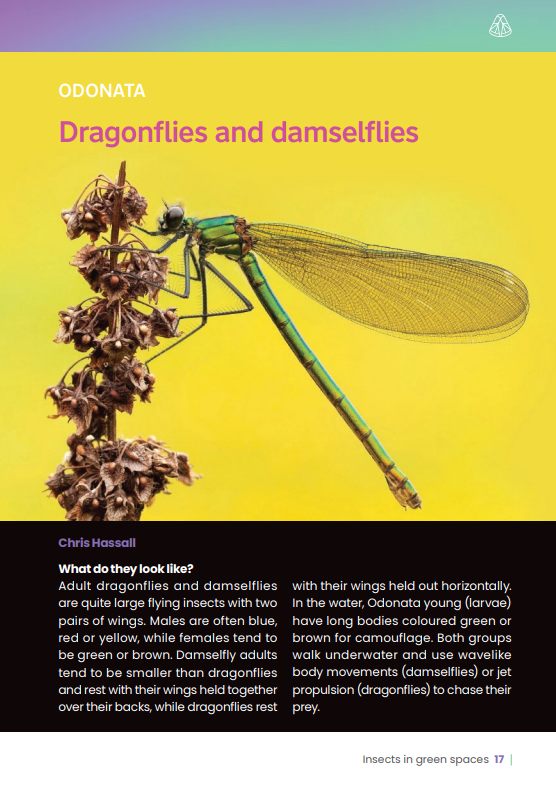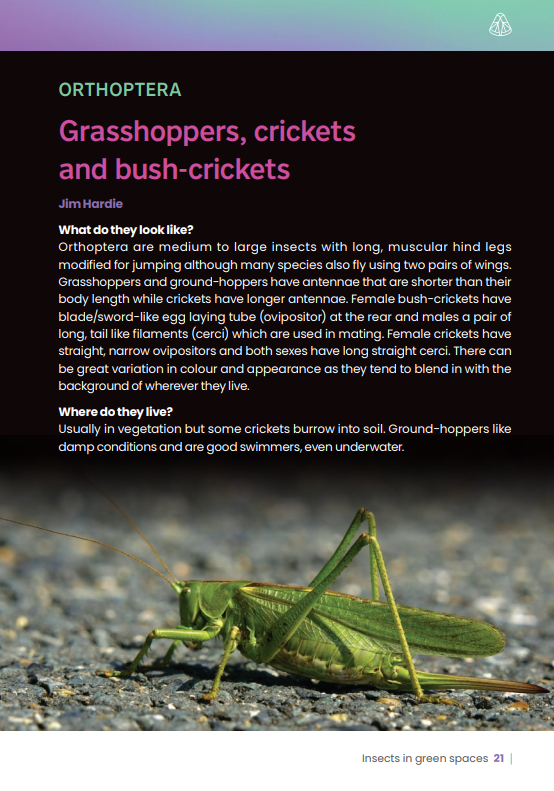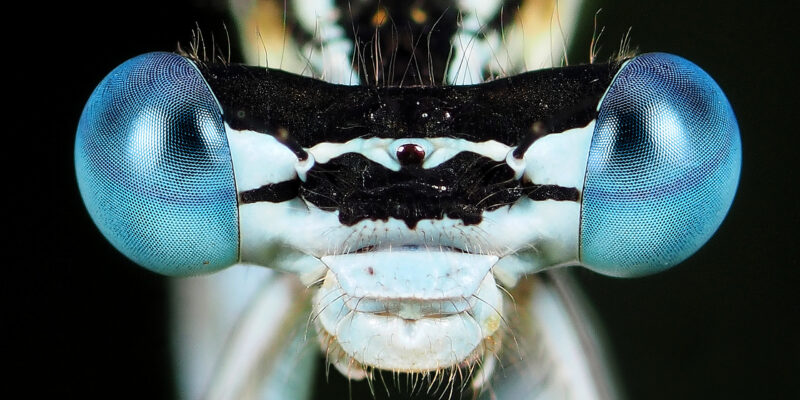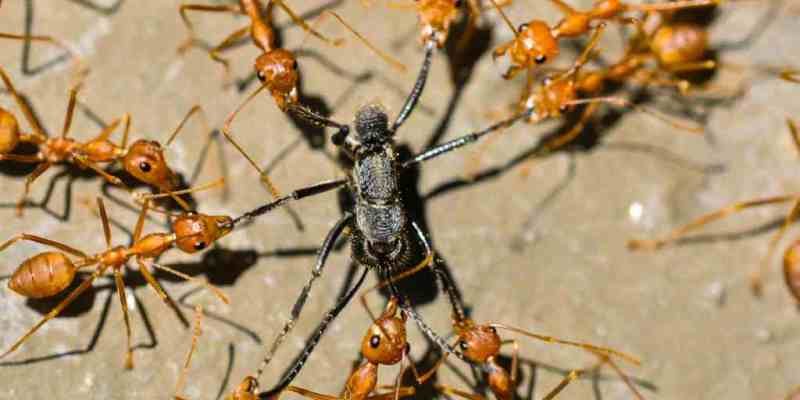The Royal Entomological Society has produced a new free-to-download insect guide.
The new guide, titled ‘Insects in green spaces’, offers an overview of the different types of insects, with advice on how you might create a place for them to live in a green space near you.
Insects play so many roles in our world, from pollinating flowering plants including crops, helping decompose plant and animal material, keeping populations of other insects in check with predation, and providing food for larger animals such as mammals and birds. Declines of insect populations have been recorded, due to many factors such as decreasing habitat, extremes of weather and use of agrochemicals.
Research shows that humans can act to help insects. We can increase habitats for insects with whatever green space we might have nearby. Any local green space, be it a window box, a strip of earth by a front door, a back garden or a local community area, is an opportunity to create a home for insects and other invertebrates.
“Providing space for insects doesn’t have to involve great effort or expense. Small actions can provide great benefits, and once you start to notice the insects in your local area, watching them go about their business can provide all the drama and joy of the best nature documentaries. We hope this guide to the different groups of insects that exist will help you enjoy the insects in your garden, windowsill, and or local park, and help them to thrive.”
Professor Jane Hill, University of York, RES President


“The RES vision is to enrich the world with insect science. Insects are the most abundant group of animals in the world and more than one million species have been described so far, with many more discovered every year. This guide highlights the 27 different groups of insects in existence from the most common to the most scarce. We hope it will inspire you to create some insect habitat in your green space, or just to realise how remarkable and valuable insects are.”
Simon Ward, RES CEO









